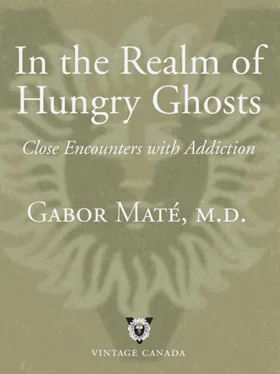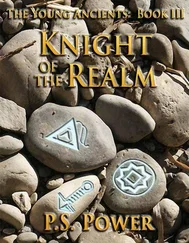According to Dr. George Povey, Professor of Health Care and Epidemiology at the University of British Columbia, in 1995 illegal drugs caused 805 Canadian deaths, alcohol 6,507 and tobacco 34,728. “So who’s for a War on Tobacco?” he asks. 6
A major study conducted on behalf of the British government in 2005 illustrated both the rich benefits that current drug legislation confers on major traffickers and the ludicrous impotence of law enforcement efforts against the drug trade. “The profit margins for major traffickers of heroin into Britain are so high they outstrip luxury goods companies such as Louis Vuitton and Gucci,” reported the Guardian. “The traffickers enjoy such high profits that seizure rates of 60–80% are needed to have any serious impact on the flow of drugs into Britain but nothing greater than 20% has been achieved.” Downing Street allowed only half the study’s findings to be published, prompting an opposition spokesperson to argue, with reason, that “what this report shows and what the government is too paranoid to admit is that the ‘war on drugs’ is a disaster. We need an evidence-led debate about the way forward but if they withhold the evidence we can’t have the debate.” 7
In North America the situation is no different. “The major reason why our society is awash in illicit drugs is the unbelievable profits that can be realized in their being manufactured and sold,” writes Judge James P. Grey of the California Superior Court. 8It is the same in Canada. Dr. Povey points out that “the billion Canadian bucks we throw at drug control each year have trivial effect upon supply but powerfully inflate market value. A kilo of heroin that costs $3,000 in Pakistan sells for $150,000 on our streets, which explains why a serious drug user needs $50,000 spare change yearly to stay cool.”
The economic burden imposed by the War on Drugs is difficult to estimate, but most authorities agree that in the U.S. it’s in the range of tens of billions of dollars annually. Gary Becker, Professor of Economics and Sociology at the University of Chicago’s Graduate School of Business, has calculated $100 billion per year as a minimum figure:
These estimates do not include important intangible costs, such as the destructive effects on many inner city neighborhoods, the use of the American military to fight drug lords and farmers in Colombia and other nations, or the corrupting influence of drugs on many governments. 9
How such expenses in support of a failed policy can be justified is beyond imagining in a country where the poverty rate is increasing and where in some areas the rising infant mortality rate is comparable to Third World figures. Although the War has not been prosecuted as ferociously in Canada, were our costs to be collated, they would still be egregious at a time when health care, education and social welfare conditions have all deteriorated owing to diminished government funding.
An unintended but tragic consequence of the international campaign against narcotics is that through much of the underdeveloped world, opiates are not available for soothing physical pain. Countless human beings, from infancy to old age, live and die in pain. According to the World Health Organization nearly five million people a year with advanced cancer receive inadequate or no pain relief, along with another 1.4 million with late-stage AIDS. The WHO has no statistics for those suffering pain owing to a host of other causes, from injuries to diseases of all sorts. The problem? An exaggerated fear of addiction. “Pain relief hasn’t been given as much attention as the war on drugs,” David E. Joranson, director of the Pain Policy Study Group at the University of Wisconsin’s medical school, told the New York Times. 10
Finally, if the purpose of the War is to deter substance use by drug desperadoes such as the ones who inhabit Vancouver’s Downtown Eastside, the very idea of its success is laughable.
Drugs do not make the addict into a criminal; the law does. When alcohol was prohibited, drinkers were breaking the law. If cigarettes were illegal, there would be a huge underground market for tobacco products. Gangs would form, criminal business empires would flourish and smokers would be spending a large proportion of their income on nicotine-containing substances. Add the health ravages and medical and economic costs of nicotine addiction, the hundreds of thousands of deaths it causes and the many family tragedies it already creates—and then factor in the enormous costs of waging the War on Drugs on yet another front. The result would be a monumentally costly and futile effort. “We have been and will always be totally unsuccessful in our attempts to repeal the law of supply and demand,” writes James P. Grey in his book Why Our Drug Laws Have Failed. “We might as well try to repeal the law of gravity.” 11As Judge Grey documents in his persuasive critique, subtitled A Judicial Indictment of the War on Drugs, most of the social harm related to drugs does not come from the effects of the substances themselves but from legal prohibitions against their use.

Quite apart from the multiple billions squandered on this futile war, the economic burdens of criminalization are incalculable, as we may glimpse from the daily pursuits of my own patients. Several have blown through large inheritances in short order—seventy thousand dollars over the course of a few weeks in the case of one woman, an inveterate cocaine and heroin addict now terminally ill, in her early fifties. Such windfalls are rare, leaving crime, panhandling and prostitution as the common sources of drug money. Drug dealing can range from the petty to the extensive, but in the Downtown Eastside there are few profiteers: most who engage in it do so only to fuel their own habits. “Two years ago I got back into dealing,” one man told me recently. “I was making $19,000 a month. All gone…not a penny, except for the ten grand I gave to the mother of my little son. It went on for ten months, so I made $190,000…and I walked away with ten thousand.
“It’s a snap to spend that kind of money. Typically the hundred-dollar or three-hundred-dollar habits a day are mostly cocaine as opposed to heroin, ’cause heroin is so cheap. You can get a quarter gram of really, really good heroin for only thirty dollars and I don’t care how bad your habit is, on thirty dollars’ worth nobody needs to be sick. *23But with cocaine, that’s an easy three or five or seven hundred dollars a day.
“Now, when it comes to selling stolen goods, you’re lucky if you get 10 per cent on the value. I’ve seen a two-thousand-dollar bicycle go for twenty-five dollars’ worth of rock cocaine. So typically, if somebody is generating three hundred dollars a day, he’s probably stealing three thousand dollars’ worth of stuff. Yeah, you’re lucky if you get 10 per cent.”
In the privacy of my office many people are remarkably candid about how they find the cash to fund their drug habit. McDermitt, a forty-year-old with sunken eyes, gaunt features and a perpetual smirk on his face is even boastful as he tells me of his piratical exploits.
“What?” I say incredulously. “How much did you say?”
“That’s what they estimated in court, that I stole two million, seven hundred thousand dollars over the course of two and a half years.”
“That’s just impossible.”
“Well, that was their estimate…”
McDermitt does his thievery at the port of Vancouver, where container ships are moored. He and a buddy worked out a system for stealing goods from the ships without being picked up by security. Among other things, they steal cigarettes and get into “containers with expensive Asian clothing—long-sleeved silk shirts for men, women’s fancy dresses.”
Читать дальше













